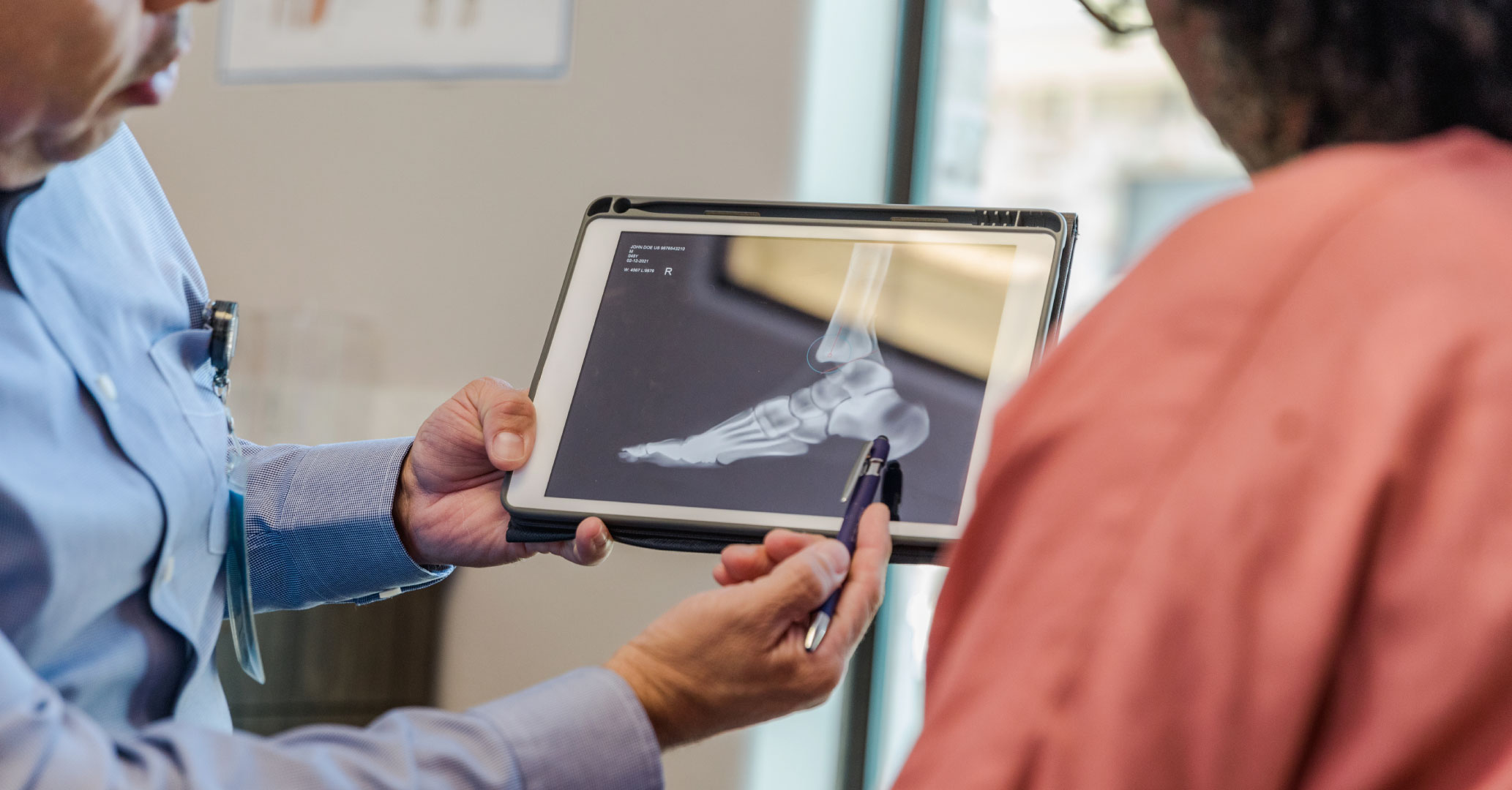Inspira Podiatrists share simple but often overlooked ways to care for your feet—from walking on the...
Read More
From accidental falls, sports-related injuries or just moving the wrong way, fractures, strains and sprains in the feet can happen at any time. With convenient locations across South Jersey, our experienced, compassionate podiatrists are here to diagnose and treat your condition.
Foot fractures, strains and sprains are common musculoskeletal injuries affecting muscles, tendons, ligaments and bones. Fractures, also known as broken bones, happen when there is a crack or complete break in the bone. When a person sustains a fracture, they may experience pain, swelling and difficulty moving the affected area.
Foot strains occur when a muscle or tendon is stretched or torn. They typically cause localized pain, muscle weakness and limited range of motion and are commonly seen in athletes or individuals who perform repetitive movements. Sprains in the feet, on the other hand, involve injury to the ligaments, which are the tissues that connect bones at the joints. They can cause pain, swelling, bruising and instability in the affected joint.
Diagnosing foot fractures, strains and sprains in the feet involves a comprehensive evaluation by a podiatrist. Your doctor will conduct a physical examination to assess the affected area for signs of tenderness, swelling or deformity. They may also order imaging tests, such as X-rays, CT scans or magnetic resonance imaging (MRIs) to visualize the bones, muscles and ligaments and confirm a diagnosis. They may partner with emergency medicine physicians and orthopedic doctors during this process and in developing a treatment plan.

Foot fractures, strains and sprains may be treated with various methods. For complex cases or injuries beyond the foot and ankle, an orthopedic specialist may partner with a podiatrist or be better suited to provide comprehensive care. These approaches include:

Initial treatment for sprains and strains often involves: Rest, Ice, Compression, and Elevation.

Immobilization involves limiting the movement of the affected area to facilitate healing and prevent further damage. This can be achieved through casting, splinting, or orthotic devices, depending on the severity of the injury.

Severe foot fractures, strains, or sprains that do not respond to conservative treatments may require surgical intervention to realign bones, repair soft tissues, or stabilize the affected area. Podiatrists with surgical expertise can perform specialized procedures to address complex foot and ankle injuries that require surgical treatment.
At Inspira, we understand that the pain and discomfort you experience can affect your quality of life. Our multidisciplinary approach provides convenient and compassionate care throughout diagnosis, treatment and recovery. They do this through their specialties and partnerships with emergency medicine physicians and orthopedic doctors to provide innovative solutions using cutting-edge technology.
The healing time for foot fractures, strains and sprains varies depending on the severity of the injury. Generally, mild to moderate fractures, strains or sprains of the feet can take several weeks to a few months to heal completely. Severe or complex cases may require a more extended recovery period.
It depends on the nature and extent of the injury. In most cases, it is a good idea to avoid strenuous activities that can worsen the condition or hinder the healing process. Your health care provider can guide you on the appropriate activity level or recommend modified exercises to aid recovery.
Complications during the healing process may include persistent pain, increasing swelling, inability to move the affected area, worsening instability or signs of infection such as redness, warmth or discharge. If you experience any of these symptoms, it is crucial to seek medical attention promptly.

Inspira Podiatrists share simple but often overlooked ways to care for your feet—from walking on the...
Read More
Crocs offer comfort, breathability and convenience but lack essential arch support and stability for...
Read More
Learn effective strategies for safely managing corns, from gentle exfoliation and choosing...
Read More